Jul
31
2015
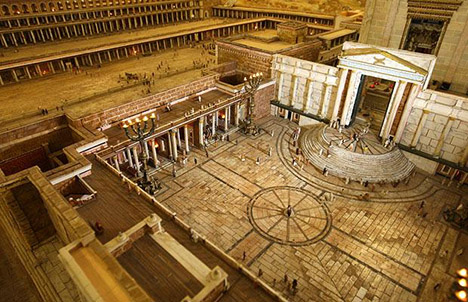
All of the arcane “personal” stipulations in the Torah find their fulfilment in the corporate worship of Israel. Just as the sacrifices were to be without blemish, so also were Israelites to be spotless if they were to stand before God. But the rules for the identification, quarantining and ceremonial cleansing of leprosy only begin with the skin of the worshiper in the wilderness. They then move to the garment, and finally to the house in the Promised Land. A failure in personal holiness would lead eventually to a corruption of corporate worship. James Jordan writes:
Continue reading
Comments Off | tags: AD70, Herod, James Jordan, Leprosy, Leviticus, Matthew, Temple, Zechariah | posted in Biblical Theology, Quotes, The Last Days
Aug
17
2014
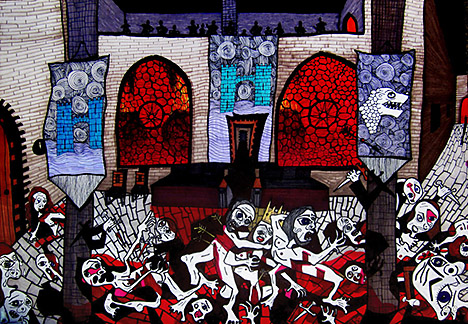
For as in those days before the flood
they were eating and drinking,
marrying and giving in marriage,
until the day when Noah entered the ark…
(Matthew 24:38)
The Oath/Sanctions section of the Revelation seems to have three parts. The judgment begins in the house of God (Temple bowls – Garden), then follows the revelation of the “mystery” of the Woman and the kings of the Land, and finally the judgment reaches out to the borders of the World (the oikoumene). This corresponds not only with the Garden, Land, World architecture of the nations in Genesis 1-10, it brings an end to the “intermarriage,” the compromise of the Priestly people with idolatrous kings. It is fitting that the third part of this judgment (chapters 18-19) culminates in a Red Wedding.
Continue reading
Comments Off | tags: AD70, Covenant curse, Covenant Theology, Josephus, Literary Structure, oikoumene, Revelation, Temple | posted in Bible Matrix, Biblical Theology, The Last Days
Nov
2
2013
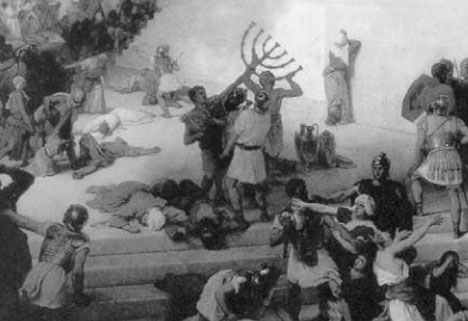
Jesus answered them, “Destroy this temple, and in three days I will raise it up.” (John 2:19)
Every one of God’s houses throughout Bible history has a “former days” and a “latter days.” Each goes through a process of death and resurrection, a “purification by fire.” Following the Bible Matrix, the central “slaying” of every row has a Day 4 symbol, something related to “the governing lights,” the all-seeing eyes of heaven.
Continue reading
Comments Off | tags: AD70, Covenant Theology, David, Ezekiel's Temple, Solomon, Tabernacle, Tabernacle of David, Temple | posted in Bible Matrix, Biblical Theology, The Last Days
Oct
30
2013
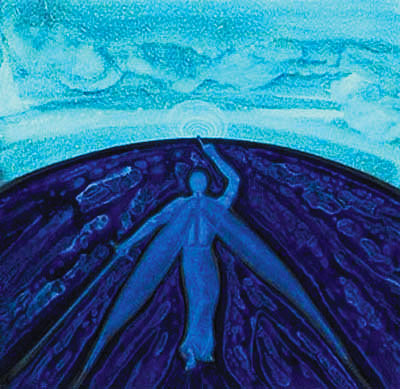
“And as he prayed, the appearance of his countenance was altered, and his clothing was white and glistening.” (Luke 9:29, King James 2000 Bible)
The Tabernacle was covered in three layers: linen, red-dyed ramskin, and a third layer of tachash. What’s tachash? The word is a mystery, and there have been many suggestions concerning its meaning, from unicorn to dolphin. But perhaps that mystery has now been solved. And the glistening solution is nothing like you’d imagine in a million years.
This post has been slain and resurrected for inclusion in my 2015 book of essays, Inquietude.
Continue reading
3 comments | tags: Baptism, Esther, Exodus, Ezekiel, High Priest, James Jordan, Job, Leviathan, Tabernacle, Temple | posted in Bible Matrix, Biblical Theology, Creation, Quotes
Sep
28
2013
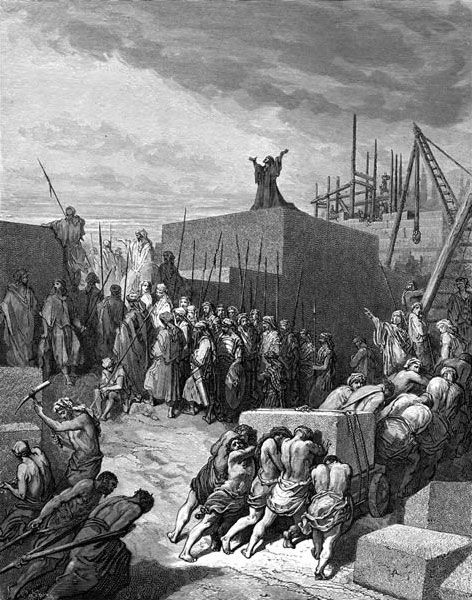
“God’s word is His presence, when delivered in a true setting.”
Continue reading
Comments Off | tags: Angels, Haggai, James Jordan, Prayer, Psalms, Stephen, Temple, Zechariah | posted in Biblical Theology, Quotes, The Restoration Era
Aug
26
2013
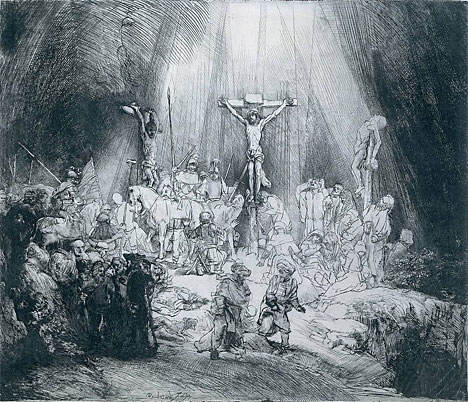
“Then I saw heaven opened, and behold, a white horse! The one sitting on it is called Faithful and True, and in righteousness he judges and makes war… From his mouth comes a sharp sword with which to strike down the nations, and he will rule them with a rod of iron.” (Revelation 19:11-15)
The Bible is big on fruit. The first “Covenant Ethic” was a prohibition on fruit from a particular tree. The transgression of Adam resulted in curses upon the fruit of the Land and the fruit of the womb. The book which describes the end of the Old Covenant, the Revelation, shows the dragon attempting to eat the son of Adam, the fruit of the womb, and then to devour the fruit of the Land, the apostolic “firstfruits” Church. [1] But where is the forbidden tree?
Continue reading
Comments Off | tags: AD70, Communion, Firstfruits, Lampstand, Revelation, Tabernacle, Temple | posted in Bible Matrix, Biblical Theology, The Last Days
Jul
9
2013

And he was teaching them and saying to them, “Is it not written, ‘My house shall be called a house of prayer for all the nations’? But you have made it a den of robbers.” (Mark 11:17)
The same word is used of the men crucified alongside Jesus in Mark 15:27.
And with him they crucified two robbers, one on his right and one on his left.
Is this merely coincidental, or is there something deeper going on? Is there a link between the “white collar” Temple crimes and the “blue collar” criminals?
Continue reading
3 comments | tags: Atonement, Crucifixion, Genesis, Mark, Temple, Ten Commandments | posted in Bible Matrix, Biblical Theology
May
18
2013
or A Ripsnorter Ritual
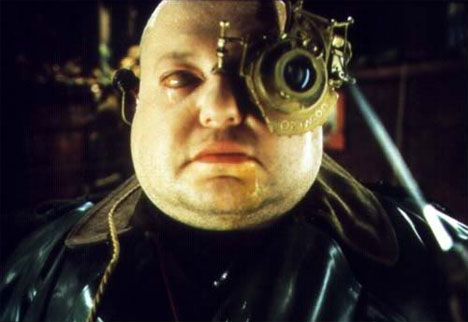 Ritual is powerful stuff. Much of modern evangelicalism prides itself in rejecting liturgy and being “open to the Spirit,” and then turns this “openness” into an uninspired (and very uninspiring) human formula, in place of the inspired Divine one. Instead of following a pattern found in every part of the Bible (worship is literary architecture), we are stuck with either erroneous traditions or off-the-cuff rambles which, although “open to inspiration,” somehow sound exactly the same each week. Human beings love repetition in every area of life, and ritual is a prime method of teaching truth and holiness.
Ritual is powerful stuff. Much of modern evangelicalism prides itself in rejecting liturgy and being “open to the Spirit,” and then turns this “openness” into an uninspired (and very uninspiring) human formula, in place of the inspired Divine one. Instead of following a pattern found in every part of the Bible (worship is literary architecture), we are stuck with either erroneous traditions or off-the-cuff rambles which, although “open to inspiration,” somehow sound exactly the same each week. Human beings love repetition in every area of life, and ritual is a prime method of teaching truth and holiness.
Continue reading
5 comments | tags: Baptism, Liturgy, Peter Leithart, Revelation, Tabernacle, Temple | posted in Biblical Theology, Quotes
Feb
13
2013
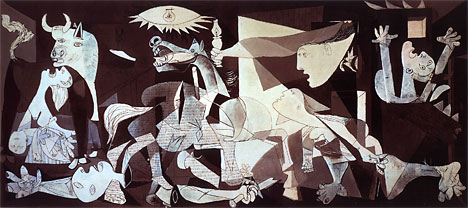
“Picasso did not paint for the eyes but for the gut. He painted for the gut that the eyes might be opened.”
One only has to compare a portrait of Picasso’s wife to that of one his lovers to prove that his strange perspective on reality worked from the inside out. What we feel as we observe his works is what he feels about his subjects as he paints them. The spirit and desire which animate man and beast not only move flesh but, in Picasso’s world, distort reality. Time and history without fail reveal the true character of objects, people and ideologies. A Picasso is often the exterior of a person or event shaped or distorted by the spirit and emotion within. It is a history in a single frame, an X ray that discovers not the bones but the heart. Emotional reality is revealed in shape and color. In these cases, his subjects are possibly “ethical nudes.”
This post has been slain and resurrected for inclusion in my 2015 book of essays, Inquietude.
Continue reading
Comments Off | tags: Culture, Numbers 5, Revelation, Temple | posted in Biblical Theology, The Last Days


































